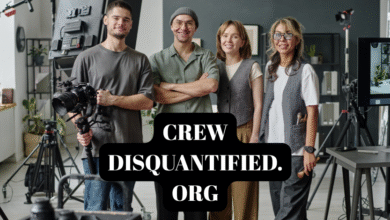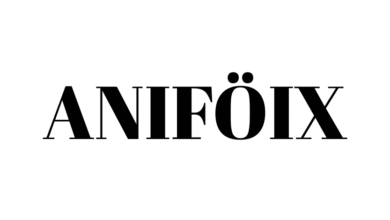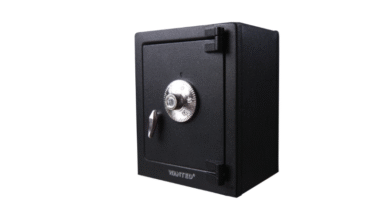James charles apology video

When a major influencer steps into the spotlight to say “I’m sorry,” you can bet the internet will be watching. That moment arrived for James Charles when he released his public apology video. Given his rapid rise and large audience, the stakes were high. But was the apology real? Did it work? And what lessons can we draw from it if you’re an influencer, a brand, or just someone curious about online culture? In this article I’ll walk you through the background, what triggered the video, how it was delivered, how people reacted, and what it all means. I’ll also share my own reflections and practical take‐aways for anyone navigating public accountability in the digital age.
I. Background: Who is James Charles?
James Charles Dickinson, more commonly known simply as James Charles, is an American YouTuber and makeup artist. Born in 1999 in Bethlehem, New York, he came into prominence via his YouTube channel where he combined bold makeup looks with influencer energy. In 2016 he became the first male ambassador for CoverGirl—a milestone that underscored his influence in the beauty space.
By the late 2010s, James had millions of subscribers on YouTube and an even larger presence on Instagram and TikTok. His “Hi sisters” catchphrase and flamboyant style made him a household name in the beauty community. But that kind of rapid rise also brings increased scrutiny. When you are visible, your actions and words matter more—both to your audience and to the industry. For James Charles, that meant that when controversies spoke, the backlash was loud.
Read Also: Exploring Ymoviehd: The Ultimate Guide to Free HD Streaming in 2025
II. The Trigger: What Led to the Apology Video
The apology video didn’t come out of thin air; it was a response to mounting controversies. One of the most serious was the grooming‐allegation scandal in early 2021. According to reputable sources, James admitted that two people under the age of 18 had contacted him on social media and he engaged in “flirty conversation” believing they were 18. One individual was reportedly 16. James admitted his responsibility: “As an adult, it is my job … to verify who I’m talking to,” he said.
But that was not the only controversy. In 2019 he had a public feud with fellow beauty influencer Tati Westbrook, where accusations and counter‐accusations flew, causing subscriber losses and intense media attention. So by the time the apology video was released, the stage was already set: trust had been damaged, questions had piled up, and many were asking whether the influencer world was finally being held accountable.
III. The Apology Video: Content and Tone
The apology video, titled “Holding Myself Accountable”, is about 14 minutes long. Right from the start, James says: “First and foremost, I need to say sorry. I owe a massive apology to anybody I have hurt or anybody I made uncomfortable with my actions.” He goes on to say, “I fully understand my actions and how they are wrong. There are no excuses for them.”
In the video he outlines that two different people under the age of 18 were involved, that he believed both to be 18, and that once he realized they were underage he blocked them. He also states that moving forward he will take additional steps: “Instead of taking someone’s word for it, I now will ask to see the ID or passport of every person I have a conversation with.”
From a production standpoint, the video embodies what many describe as the “apology video aesthetic.” He appears with little or no makeup (notably for a beauty influencer), in a serious tone, filming himself as opposed to being staged. The minimalist look and subdued mood are meant to signal sincerity. This aligns with broader media analysis of influencer apology videos: that the look of vulnerability is part of the message.
IV. Public Reaction & Media Coverage
As you’d expect, the public response was mixed. Some fans appreciated the apology and hoped for change; others felt it came too late or doubted its sincerity. Online forums like Reddit were harsh: one post reads, > “James Charles sent sexual snap to teenage boys and admitted it.”
Media coverage picked up the story not just as a single apology but as part of a broader discussion about influencer responsibility. For example, reports noted that the apology did not immediately reverse subscriber losses or fully restore brand partnerships. One article observed that influencers wearing minimal makeup during their apology video might signal vulnerability—but also open them up to accusations of performative remorse.
So the reaction was not simply “He apologized, end of story.” It became a conversation about how public figures manage crises, how audiences judge authenticity, and how trust can be rebuilt (or lost).
V. Effectiveness: Did It Work?
Was the apology effective? That depends on what you measure. If the measure is “immediate public forgiveness,” then no—it did not instantly erase the damage. But if the measure is “acknowledgment of wrongdoing and stated intent to change,” then yes—it served that purpose.
James’ statement that “the only way to actually show and prove I’m sorry is through action and change” is key. The real test, however, is in the follow‐up: Did he change his behavior? Did his audience observe that change? Did brands trust him again? Some recovery happened, but the stain remains for many.
From my viewpoint, the most important takeaway is that an apology must be paired with credible action. A heartfelt video is a start, but if you go back to your old patterns—or if your audience perceives you did—it won’t hold. Also, timing matters; waiting too long or appearing to just pay lip service creates skepticism.
VI. Broader Lessons: Apology Videos in the Influencer Era
This incident is instructive beyond just one person. The concept of the “apology video” has become a genre in online culture. Common tropes include: the influencer looking somber, minimal makeup or “every-day” look, acknowledging they messed up, promising growth. Analysts have pointed out that these cues are intentionally chosen to generate sympathy or authenticity.
If you’re an influencer or brand, here are some practical pointers:
-
Be clear about what went wrong. Vague apologies (“I’m sorry if anyone was hurt”) don’t land as well as specific ones (“I sent inappropriate messages to minors believing they were adults”).
-
Take full responsibility. Avoid framing yourself as the victim or shifting blame.
-
Show how you will change. Words like “I will…” or “Going forward…” matter more than the apology itself.
-
Ensure your follow‐through matches your words. Audiences have long memories and will note if you resume old behavior.
-
Authenticity matters. The production style of apology videos—even what the influencer is wearing—can influence how the message is received.
-
Don’t treat apology videos as the end. They’re part of a process. The real work happens afterward.
From my observation, many viewers are less forgiving of “apology fatigue” (when someone apologizes multiple times for different things without noticeable change). That wears thin. The case of James Charles demonstrates how multiple controversies can deplete trust, and one video alone may not restore it.
VII. My Reflection & Insights
Watching this unfold, I’m reminded that influencer culture is still somewhat uncharted territory. The dynamics between fame, audience trust, accountability, and authenticity are evolving. One thing I personally find interesting: when someone whose career is built on visual perfection (like a makeup influencer) strips back that veneer for an apology—it sends a strong visual message. But at the same time it invites scrutiny: if your brand is based on beauty and gloss, suddenly presenting without makeup could appear theatrical.
From my point of view, the most successful apology is when you can’t just feel the apology—you see the change. In that sense, the video is the “announcement,” but the follow‐through is the proof. For anyone in a position of influence—whether micro-influencer or macro—the lesson is simple: treat your audience as real people, not just numbers. They will pay attention to how you act, not just what you say.
If I were advising a smaller creator, I’d say: if you need to apologise, do it quickly, do it genuinely, let your actions speak louder than your words, and then move on to showing how you apply what you’ve learned. And for brands working with influencers: keep an eye not just on the apology but on the patterns afterward.
VIII. Conclusion
The James Charles apology video is more than a single moment on YouTube—it’s a case study in how influencer culture handles public mistakes, trust, and redemption. He acknowledged significant wrongdoing, attempted to take responsibility, and promised change. But whether that was enough—and whether the audience accepted it—depends on continued action, not just words.
In the end, what this episode teaches us is this: for anyone with visibility, your words matter, your actions matter more, and transparency is critical. An apology video may open the door to forgiveness, but walking through that door consistently is what rebuilds trust.
FAQs
Q1: What exactly did James Charles apologize for?
He apologized for sending flirty or inappropriate messages to two people under the age of 18, believing them to be 18. He acknowledged his actions were unacceptable and took responsibility.
Q2: When was the apology video released?
The apology video titled “Holding Myself Accountable” was released around April 2021.
Q3: Has James Charles’ brand recovered since then?
There has been some recovery, but the incident left a mark. Subscriber losses, negative media attention, and questions about authenticity remained.
Q4: What makes a good apology video?
Key factors: clarity of what you did wrong; accepting responsibility; stating how you will change; sincerity in delivery; consistent actions after the video.
Q5: Are apology videos just PR stunts?
They can be—but they don’t have to be. When paired with meaningful change and genuine accountability, they become part of a repair process. Without that, they risk being seen as performative.



